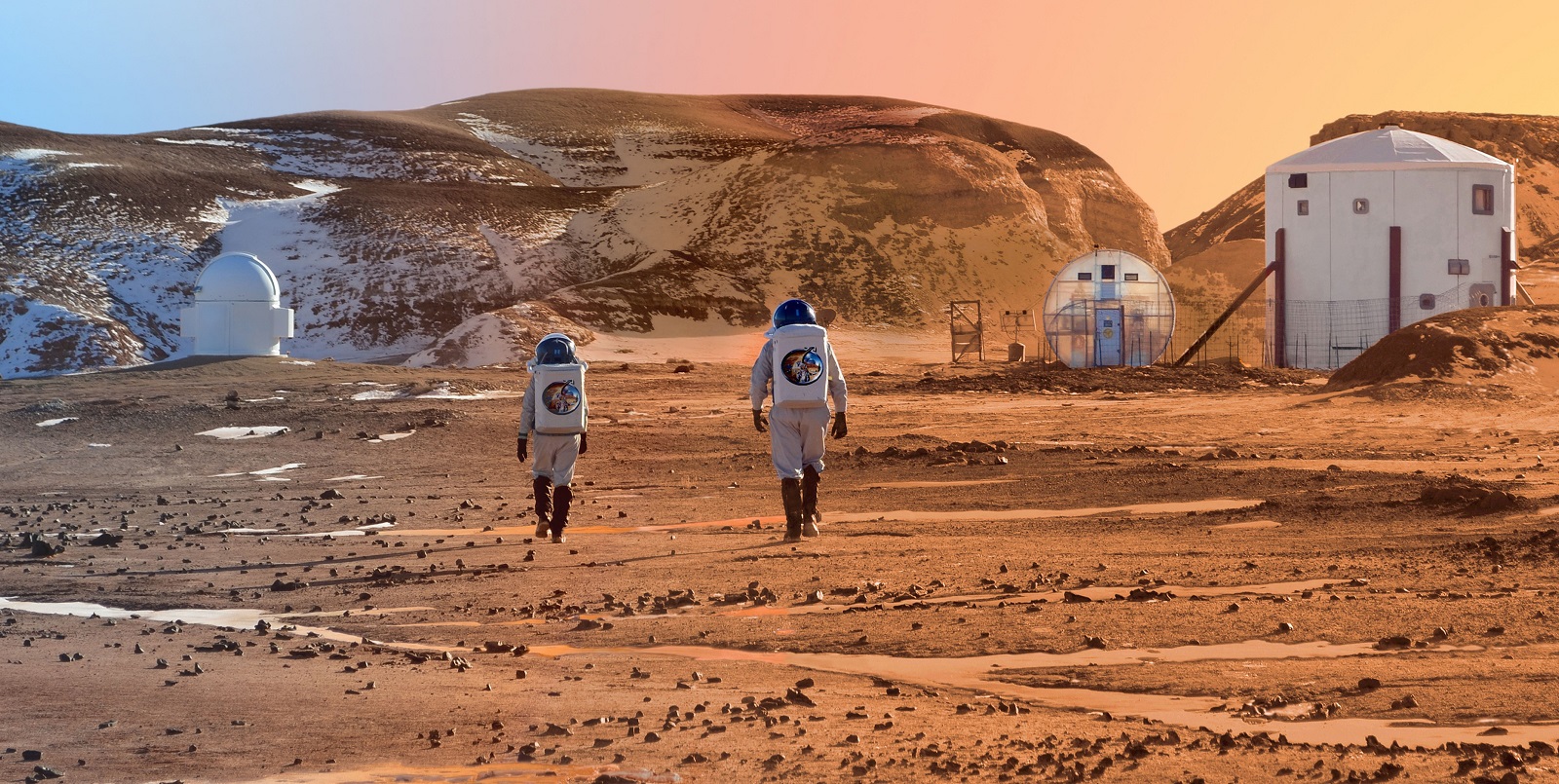If we want to go to Mars, we need not only to think about packing fuel and food, but also water. Or technology that can recycle water. Bioreactors with bacteria might be key.
If we want to go to Mars, we need to recycle urine. Bacteria can help. (Image: Mars society Education forum)
Water is a precious commodity in space. Up at the International Space Station (ISS), they recycle as much water as possible. Using filters and chemical reactions, the astronauts turn about 75% of urine back into drinking water. Every now and then, rockets bring fresh water up from earth. On a trip to Mars, resupplying is not possible, meaning even higher recycling efficiencies are required.
Bacteria that feed on urea and other organic nitrogen compounds – thus cleaning the water – could be the solution, Dr Ralph Lindeboom of the Faculty of Civil Engineering and Geosciences believes. “A big advantage is that you do not struggle with filters getting clogged after a period of time,” says the researcher, who also works for a company called Semilla Circular Systems which develops circular concepts for space purposes. “And, importantly, you can produce a wide variety of nitrogen fertilisers suitable for many different crops.”
Bacteria sent into orbit with a Russian rocket
Lindeboom and colleagues from the Ghent University (Belgium) wanted to investigate how well the bacteria can multiply after having been been exposed to cosmic radiation and micro-gravity and after having been put in a kind of hibernation mode (a state which you can artificially create by restricting their food supplies).
So they sent bacteria into orbit with a Russian rocket a couple of years ago. Or as Lindeboom and his former colleague Chiara Ilgrande write in a recent article of which they are shared first author “a broad spectrum of nitrogen cycle microorganisms was brought for 44 days into Low Earth Orbit (LEO), a geocentric orbit with altitudes ranging from 160 to 2000 km, serving as a proxy for exposure to space conditions.”
If something happens to the bacteria while in space, if for some reason their numbers are decimated – say someone didn’t put the lid back on the bioreactor correctly – then the remaining microorganisms need to be able to multiply quickly and restore the treatment capacity in the bioreactor.
On earth you can take microorganisms from another reactor to do so. In space this is far more complicated. There is no backup reactor to rely on. And for growing microorganisms you have to cope with cosmic radiation and microgravity. Cosmic radiation could damage the DNA of the bacteria and microgravity means reduced water flows around the bacteria which might hamper the organisms abilities to take up nutrients from the liquid that surrounds them.
‘The results are promising’
Among the microorganisms that were sent into space were ureolytic bacteria, ammonia-oxidising bacteria and archaea, nitrite oxidising bacteria, denitrifying bacteria, and anaerobic ammonium-oxidising bacteria.
Last month, the researchers presented his findings in the journal Scientific Reports. “The results are promising,” says Lindeboom. “In fact, we didn’t find many difference between the bacteria that we sent into space and the exact same populations that we kept here on earth as controls. For long-term human space missions or habitation, we require efficient nitrogen conversion. The results show microbial biotechnology is a viable strategy, just like on earth”, he concludes.
Do you have a question or comment about this article?
tomas.vandijk@tudelft.nl


Comments are closed.